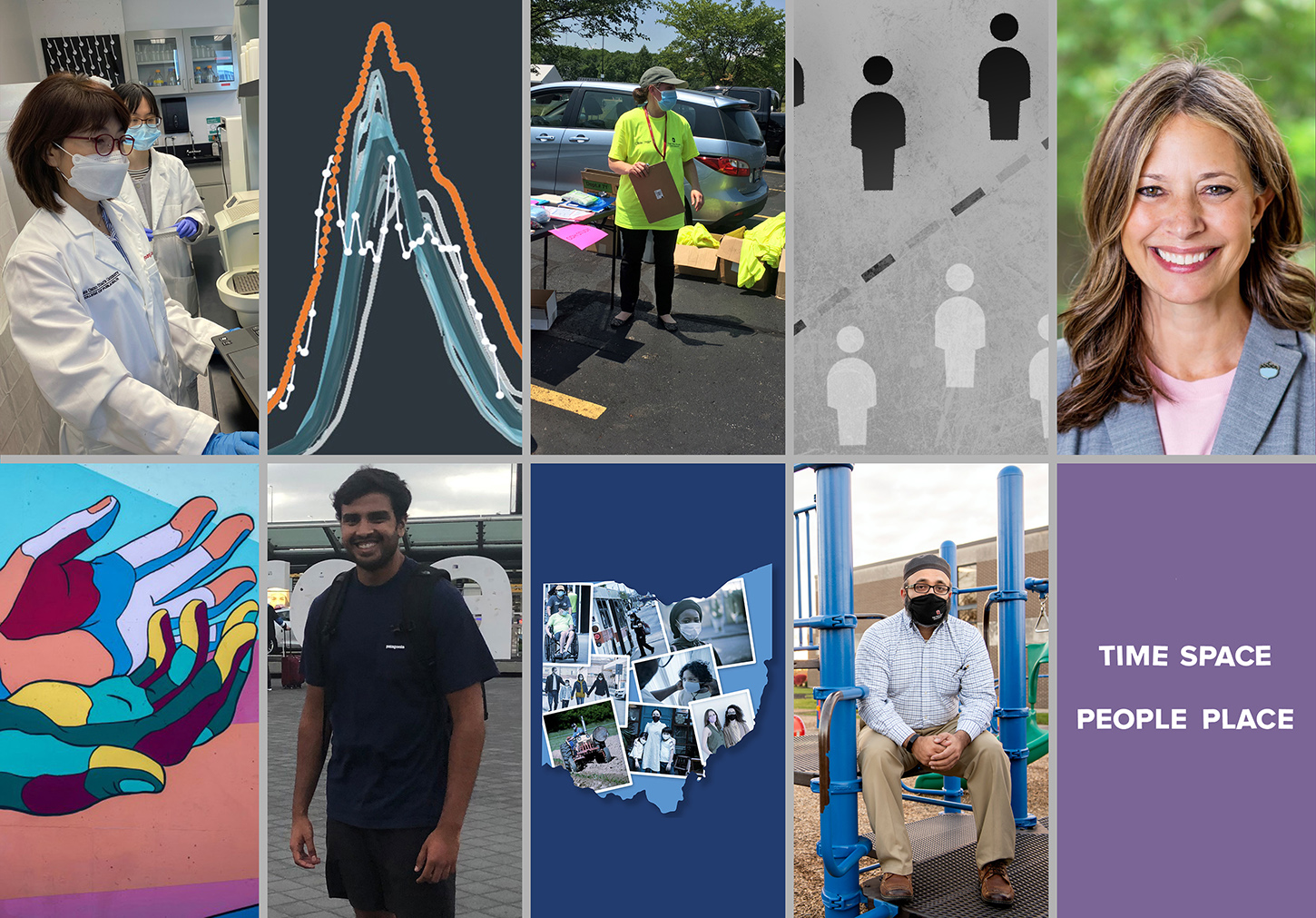Top College of Public Health news in 2020
Looking back on the year’s most-read articles

This year hasn’t quite been what we expected, and the college’s top news stories of 2020 reflect the transformations we’ve undergone — at The Ohio State University, in the community and as a society. The college is thankful to its students, staff and faculty for their courage, commitment and innovation during 2020, and we look to 2021 with hope and certainty that growth and triumphs lie ahead.
Most-read stories of 2020
- Want evidence of systemic racism? Look to public health. Racism’s broad and devastating impact on Black Americans is well-recognized within public health research and advocacy.
- A song to stop the spread. A song produced by engineering professor Michael Rayo, and inspired by public health professor Bill Miller, puts a reggae twist on an important public health message.
- College announces Dr. Amy Acton Future Leaders of Public Health Scholarship Fund. A new scholarship fund established by grateful citizens across Ohio and beyond in honor of public health alumna Dr. Amy Acton ’96 MPH will lift up students who have overcome adversity.
- ‘Boots on the ground.' Faculty and students at Ohio State's College of Public Health have been critical to Ohio’s response to COVID-19, quickly working to offer their expertise since the crisis began to unfold.
- Public health faculty, staff create COVID-19 surveillance tool for schools. Central Ohio K-12 schools are using a disease surveillance system spearheaded by professor Ayaz Hyder.
- Predictive modeling, data curation helps guide state in COVID-19 response. Professor Ayaz Hyder uses his expertise in computational epidemiology to develop a shared data resource for agencies and organizations across Ohio responding to COVID-19.
- Looking for a COVID-19 early warning. Hard at work on the fourth floor of Cunz Hall, a team led by professor Jiyoung Lee is helping detect the prevalence of COVID-19 on campus and in communities across Ohio.
- Ohio State students help with COVID-19 contact tracing. It may not have been their original plan for the summer, but the experience taught them valuable skills.
- New research-based tools to help Ohioans at higher COVID-19 risk. Those looking to improve the lives of Ohioans facing the greatest COVID-19 risks now have a comprehensive, evidence-based toolkit.
- Ohio State public health researchers estimate statewide COVID-19 prevalence. About 1% of sampled adults had COVID-19 in July, finds a study led by professor Abigail Norris Turner.
About The Ohio State University College of Public Health
The Ohio State University College of Public Health is a leader in educating students, creating new knowledge through research, and improving the livelihoods and well-being of people in Ohio and beyond. The College's divisions include biostatistics, environmental health sciences, epidemiology, health behavior and health promotion, and health services management and policy. It is ranked 22nd among all colleges and programs of public health in the nation, and first in Ohio, by U.S. News and World Report. Its specialty programs are also considered among the best in the country. The MHA program is ranked 5th and the health policy and management specialty is ranked 21st.